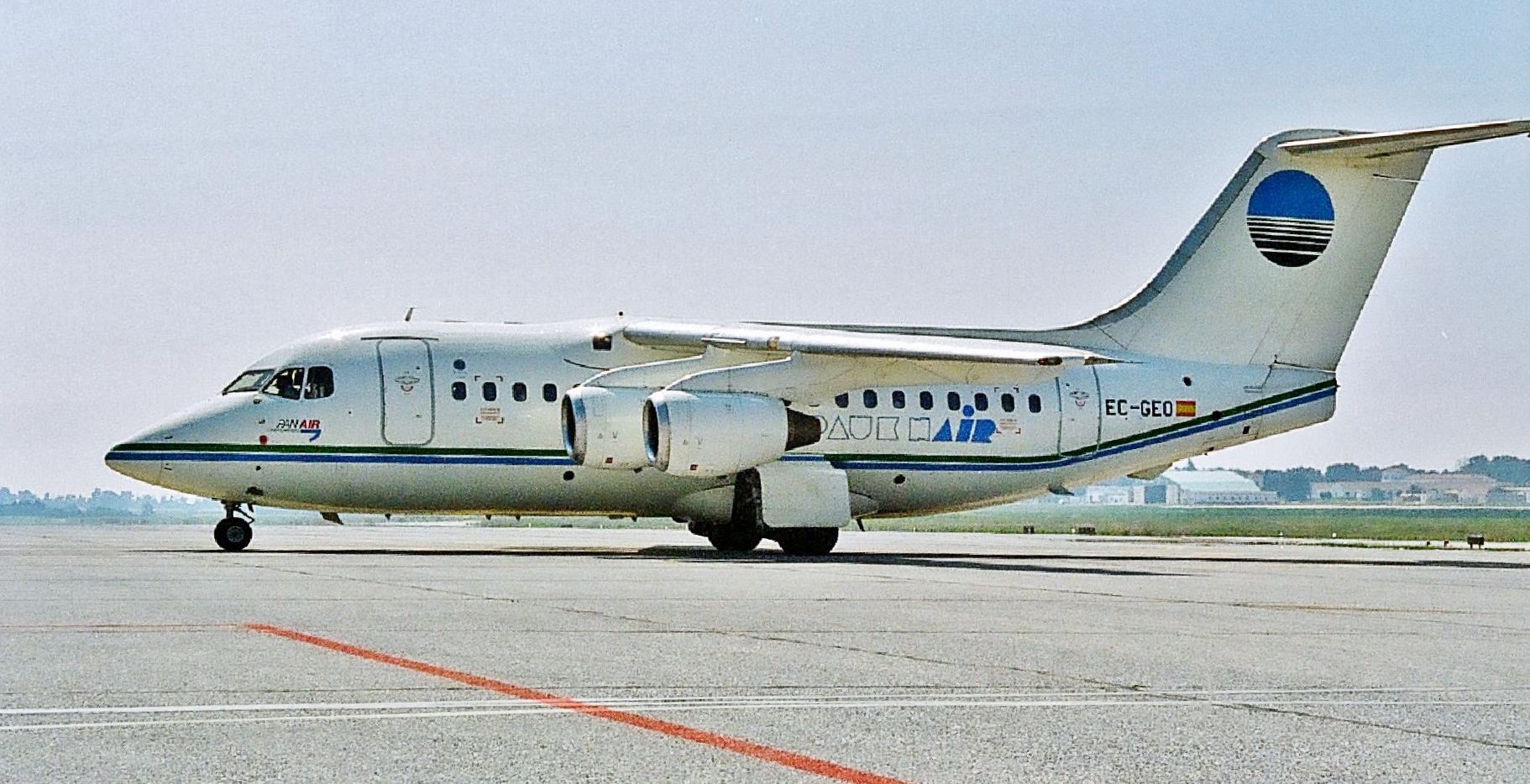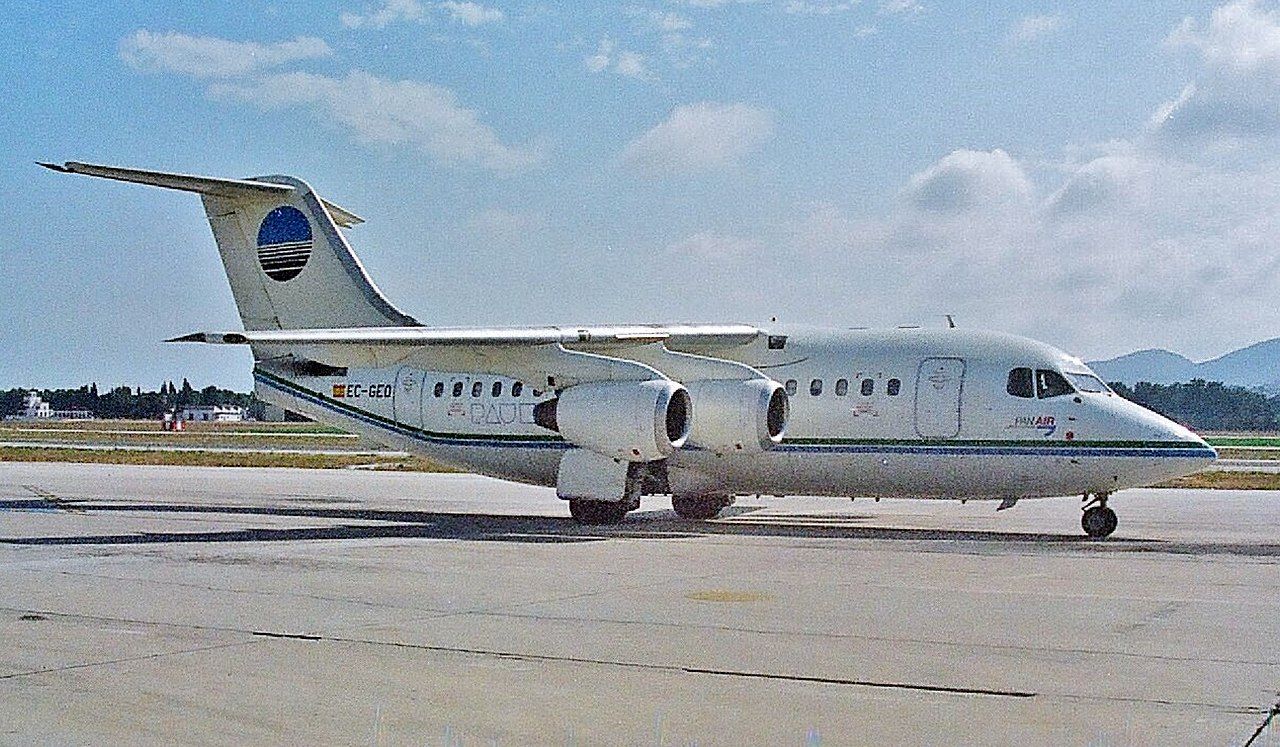Exactly 24 years ago yesterday, a PauknAir British Aerospace 146 with the registration EC-GEO crashed short of Melilla Airport (MLN) in the Spanish enclave of Melilla on the Moroccan coast. With an area of just 4.7 square miles and a population of 87,000, Melilla is one of two autonomous Spanish cities in Morocco, the other being Ceuta.
The plane involved in the crash was the seventh BAe 146 ever built, making its first flight in 1983 before being delivered new to British Airways. A year later, the plane went to Dan-Air London. It later went into storage for several years before being acquired by Spanish regional airline PauknAir in 1995.
The plane departed Malaga for North Africa early in the morning
On September 25, 1998, the plane took off from what is now Malaga Costa del Sol Airport (AGP) for the short 129-mile hop over the Mediterranean Sea to the Spanish autonomous city of Melilla on the coast of Morocco.
In charge of the flight was 39-year-old Captain Diego Clavero Muñoz, assisted by 28-year-old First Officer Bartolomé Jiménez.
Flight 4101 departed Malaga at 07:25 local time and climbed to a cruising altitude of 14,000 feet. The co-pilot then contacted Air Traffic Control (ATC) in Seville, asking for clearance to descend to 7,000 feet which was approved. Two minutes later, the now inbound aircraft was cleared to descend a further 2,000 to flight level FL 50 and contact Melilla tower for instructions. During the conversation, the co-pilot informed Melilla Tower that they were 30 nautical miles out, descending to 5,000 feet.
Melilla Tower reported that Runway 33 was in use with visibility of five miles and a few clouds at 1,000 feet with five knots of wind. At 06:45 Moroccan time, the co-pilot told Melilla Tower that they were now at 3,000 feet, 22 nautical miles from the runway. As the descent continued, the aircraft crossed the Moroccan coast at an altitude of 1,100 feet.
The area is impacted by low clouds
Because of Melilla Airport's location on Cape Tres Forcas, visibility is often a problem as clouds accumulate in the steep valleys formed by the mountains of the cape. As the descent into Melilla continued flying under instrument meteorological conditions (IMC), the pilot complained of fog and could be heard saying, "I see nothing." At 06:49, the GPWS alarm warned the pilots that they were dangerously close to the ground. At about 890 feet, the GPWS alarm sounded again, "Whoop, whoop, Pull Up, Whoop, whoop, Pull Up." At 06:50, the aircraft impacted the ground at 886 feet, killing all 38 passengers and crew.
El 25-09-1998, hace 23 años hoy, un avión #BAE146 (EC-GEO) de la compañía española #PauknAir, se estrelló contra una montaña 8 millas al Norte del Aeropuerto de #Melilla. Era el #Vuelo4101. Murieron 38 personas (34 pax y 4 tripulantes). Hoy, descansan en Paz y para siempre ➡ pic.twitter.com/zMXkjYo58Y
— Iván Castro Palacios (@ivancp25) September 25, 2021
The investigation into the crash of PauknAir Flight 4101
In its final report into the incident, the accident investigation concluded that the crash was due to impact with terrain while flying under IMC conditions. The crash was put down as being a Controlled Flight Into Terrain (CFIT), listing several contributing factors, which were:
- The non-application of arrival procedures, including descending below a safe altitude.
- Poor working communication between the captain and first officer.
- A non-application of guidelines regarding the ground proximity warning system (GPWS).
Get the latest aviation news straight to your inbox: Sign up for our newsletters today.


.gif)
